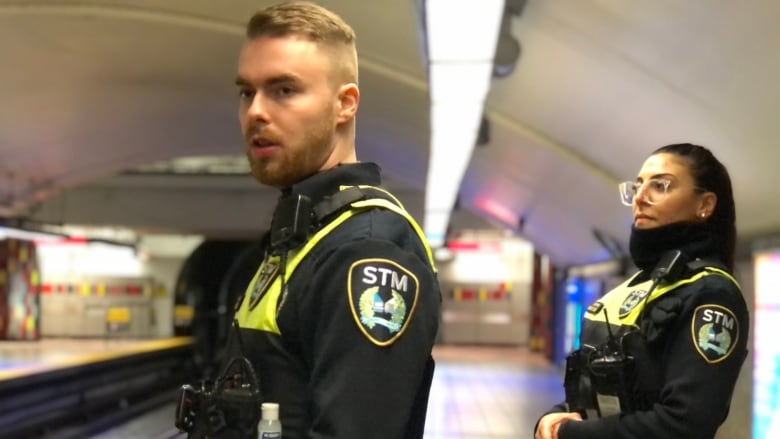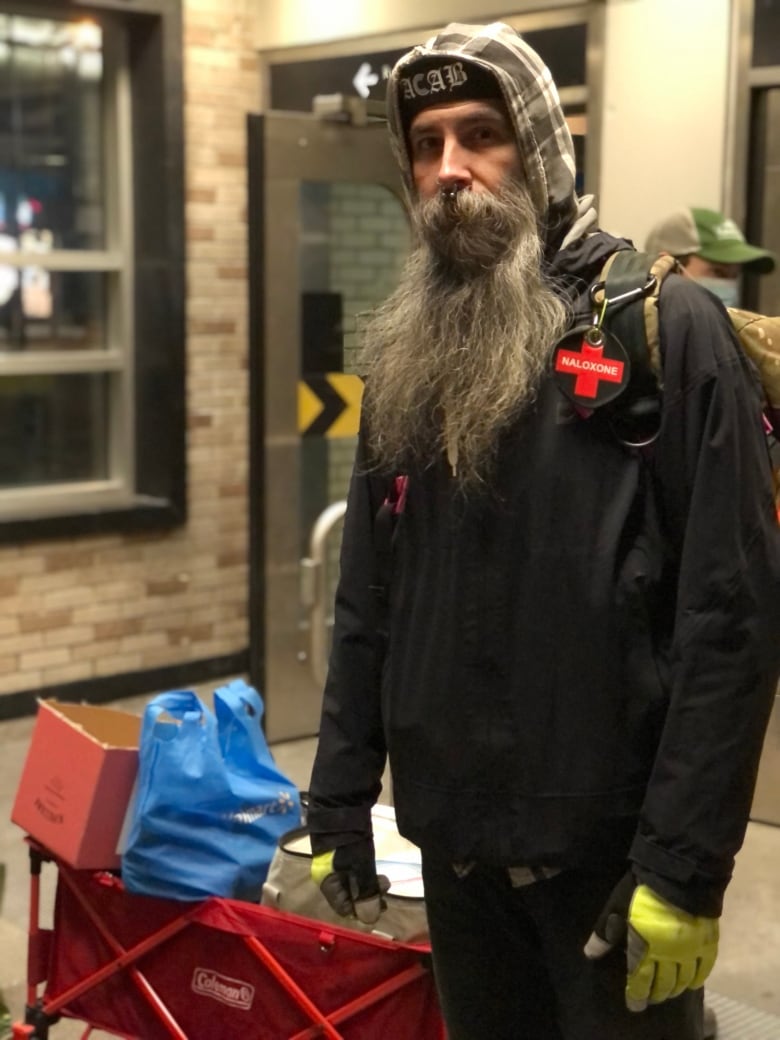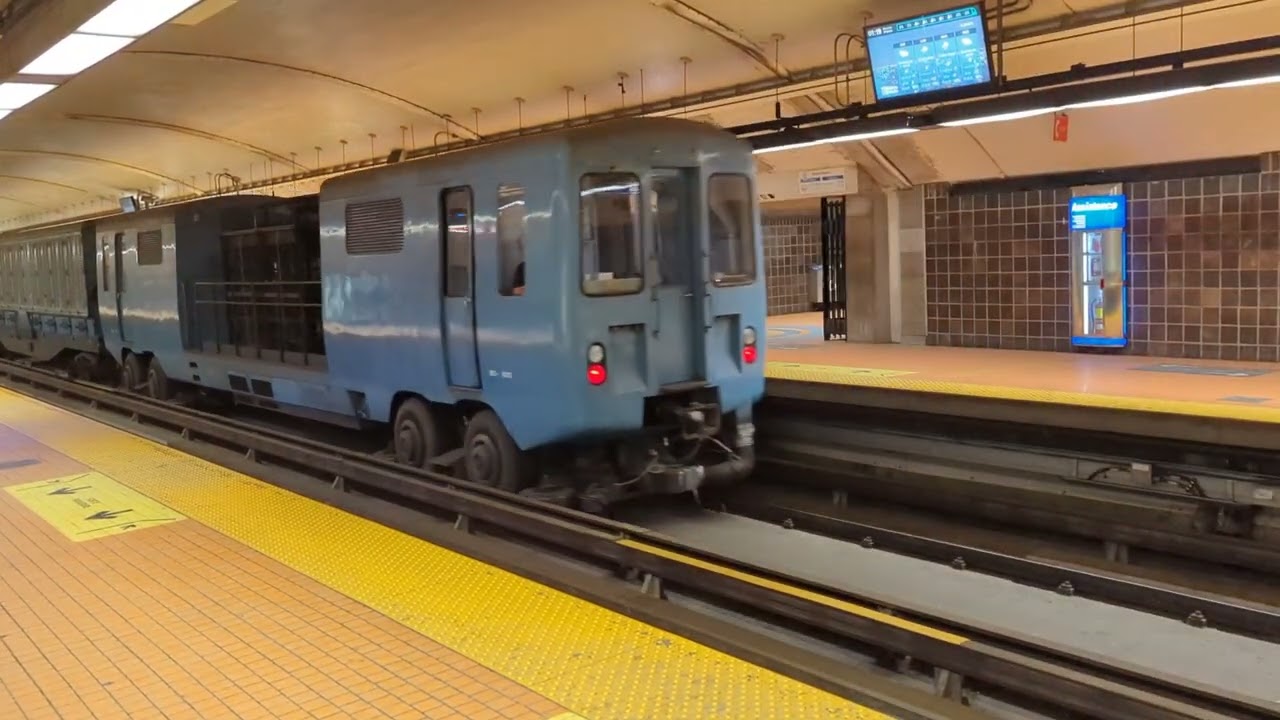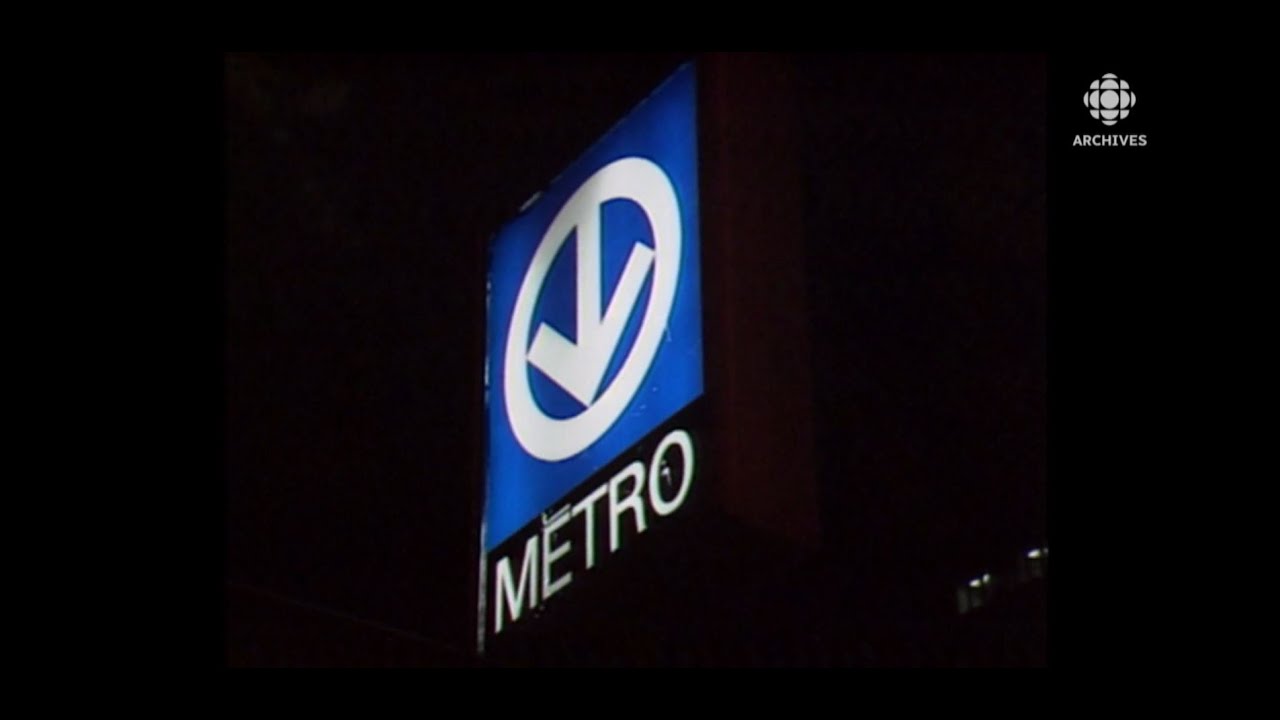Montreal transit authority responding to more overdoses in Metro stations
Special STM constables have administered naloxone 15 times so far in 2023
Ainslie MacLellan · CBC News · Posted: Apr 01, 2023 4:00 AM EDT | Last Updated: 7 hours ago

STM special constables William Barrow and Christine Cassis patrol the platform of Guy-Concordia station. It’s been just over a year since STM special constables began carrying naloxone to respond to a rising number of overdoses in Montreal’s Metro system. (Ainslie MacLellan/CBC)
Outside Lionel-Groulx Metro station in Montreal’s Sud-Ouest borough, Osyris Jackson rattles off a list of people he knows in the city who have died of overdoses, with a sense of resignation.
“I’ve seen people die so many times. It doesn’t affect you anymore,” he said. “But when you sleep though, it hits you back in your head though.”
While he tries to be careful about who he buys from, Jackson confirms what many harm reduction organizations have been warning: the supply of street drugs in the city, awash with fentanyl, is potent and unpredictable.
Another change he’s seen: more people using these drugs in some Metro stations.
“It never used to happen, like, when I was growing up,” he said “Now it’s out of control.”
Amid increasing worries from Montreal community organizations about the impact of fentanyl, new figures from the Société de transport de Montréal (STM) show that authorities in the city’s Metro stations are responding to an increase in overdoses.
As of March 1 last year, the STM’s special constables began carrying the drug naloxone, which helps reverse the effects of an opioid overdose. From March 1 to Dec. 31, 2022, they administered it 10 times.
Already, in the first three months of this year, they have used it 15 times.
“It’s no secret: it’s incredibly flagrant inside our network,” said William Barrow, STM special constable, regarding drug use in the Metro.
Barrow, who has worked for the transit agency since 2021, has not had to administer naloxone himself but says several of his colleagues have.
“There definitely is a feeling of change since the pandemic has happened,” Barrow said. “It’s brought in new challenges.”
Paramedics with Urgences-Santé also administered naloxone in and around Metro stations 12 times in 2020, 54 times in 2021 and 31 times last year — the same year STM constables also started carrying the drug.
Neither the STM or Urgences-Santé could provide statistics on overdose deaths in Metro stations.
Toxic drug supply
On the ground in the Metro, others are trying to head off overdoses too.
At Atwater station, Jay Walls, wearing a bright red vest with a patch that reads naloxone, hands out food and meal replacement drinks to people taking shelter on a cold night before the station closes.
Walls, a member of an independent volunteer street team, says he and his colleagues have administered naloxone, but they also distribute the drug to users so they can administer it too.
“Folks who are users, like they know how to reverse overdoses,” he said. “The drug supply is so toxic these days that … it’s an everyday occurrence.”
Jean-François Mary, executive director of CACTUS Montréal, a harm reduction organization that operates a supervised injection site on Du Berger Street, is not surprised that the STM is seeing more overdoses in the Metro.
Mary says dealing with overdoses and even deaths each week has become the “new normal.”
“Even me, as executive director, in the last three years I’ve revived about 20 people … in the street,” he said.
If more people are using in Metro stations, he says, it’s because they feel safer using some place where someone might find them.
“They tell us, they are scared of using alone in a dark alley because they know if they pass out, they will die,” he said.

Jay Walls, a volunteer with an independent street team, hands out food and other essentials at Atwater Metro. (Ainslie MacLellan/CBC)
Walls says sometimes the vulnerable clientele he works with are told to leave the Metro stations and it can make it harder to reach them.
“Sometimes we don’t know where they are. We have to go out and find them [in] other places, maybe they’re under the shelter of an awning of a building, or somewhere hiding,” said Walls.
STM constables say they try to emphasize a non-punitive approach with the largely unhoused population hanging out in Metro stations, some of whom are also drug users.
Barrow says they try to orient people toward services they might need, such as shelters, or in some cases rehabilitation services.
“They’ll say no over and over again for six months or even a year. But it just takes one day for them to change their mind,” said Barrow. “And that’s when we have to be there and do our best to forget all the times they’ve told us off and help them get out of it whenever possible.”
But he says constables will intervene to disperse groups of people gathered at Metro entrances.
“Say we have gatherings of five or six people consuming alcohol or doing drugs, it becomes scary for users. It creates a sentiment of unsafety,” said Barrow.
Fellow special constable Christine Cassis says they aim “to have cohabitation with people that take the Metro on a daily basis” and “people coming to find refuge as well.”
‘Exacerbated by the pandemic’
The STM received 983 security complaints in 2022, compared with 662 in 2020, including complaints for smoking, drinking or drug use in the Metro, though the agency was not able to provide a breakdown of each type of complaint.
The transit agency says that increase is largely explained by the fact that Metro ridership has rebounded to 69 per cent of pre-pandemic levels, compared with the sharp drop off at the start of the pandemic.
But in a February email to CBC, STM spokesperson Philippe Déry said the Metro, as a “city within a city,” faces many social challenges that were “exacerbated by the pandemic” including “homelessness, drug addiction or mental health.”
While several commuters who spoke to CBC outside Papineau Metro say they haven’t noticed any change, others described seeing used needles or people using drugs in downtown Metro stations.
Beekerson Fleurimont says he has friends who use drugs, but he sees a difference in just how heavily intoxicated some people are in the Metro.
He says friends of his in the Village who are in their early 60s have told him they feel uncomfortable riding the Metro at night.
“After 11pm, forget it, he doesn’t want to hear about it,” he said, of one of his friends. “We have to take a taxi.”
Fleurimont says while he personally feels safe using the Metro, he believes a more visible presence of STM constables could make other vulnerable Metro users feel more comfortable.
But Annie Savage, director of the Réseau d’aide aux personnes seules et itinérantes de Montréal, says increased surveillance in the Metro may end up further marginalizing a vulnerable population.
“There are fewer and fewer interior spaces where unhoused people are tolerated,” she said.
Savage says it’s a good thing if the STM wants to direct people toward resources, but those resources have to be available.
“That is what is cruelly lacking right now,” she said.
When it comes to resources for drug users, Mary says, Montreal has far from enough. While there are four supervised injection sites in Montreal, there are no permanent sites west of downtown.
“They need to use quickly to feel alright. They won’t move through half of the city to use a safe consumption site,” he says.
Jackson, who often finds himself sleeping and using outside under an overpass in the Sud-Ouest borough, points down the street from the Lionel-Groulx station.
“If you really care about addicts and homeless drug addicts, open up a little place down here. Open up even the abandoned buildings over there. Open it up. Have a nurse in there … and let them get high,” he said.
“At least they’re not gonna fall dead in front of you.”
Le reportage vidéo
WATCH |See STM special constables intervene with people seeking shelter in the Metro:
CBC journalists joined two special constables for Montreal’s transit authority during a recent night shift. The STM says it is trying to take a less punitive approach toward the growing population of people seeking shelter in the Metro, amid past criticism about how they intervene with people facing homelessness.


